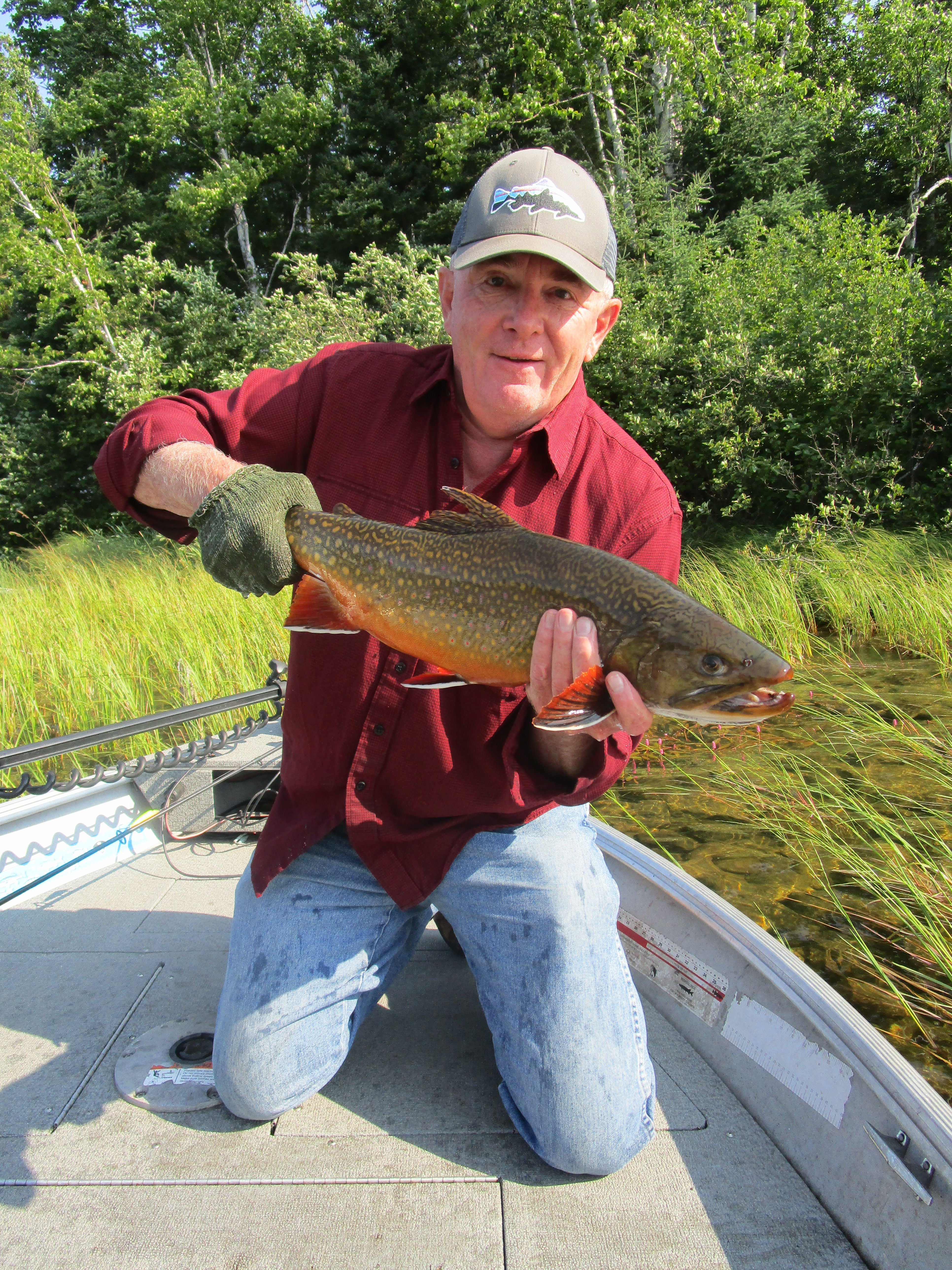

The debris that is turned up is carried downstream by the current. Once the females have located suitable spawning habitat, she will use her tail fin to excavate a shallow depression called a "redd" which will serve as a nest for the eggs. The underwater footage of fish spawning in this video was taken in early December at the base of a long white water run. Only lakes, creeks, and river systems unaffected by pollution and acid rain, with high oxygen content and cool temperatures, offered by up-welling springs or current, will successfully harbour populations of brook trout. Brook trout are a highly sensitive fish species. In lakes were current is not present, brook trout will find upwelling springs that will serve to aerate the eggs. Brook trout will key in on gravelly or sandy areas of lake bottoms, creeks, or rivers. Brook trout seek out very specific areas to deposited their eggs. In the last three months of the year, mature brook trout, aged 2 to 5 years, make their way to suitable spawning locations. Silver trout (Salvelinus fontinalis agassizii) Salmonidae (salmonids, trouts and salmons)Īurora trout (Salvelinus fontinalis timagamiensis)īrook trout (Salvelinus fontinalis fontinalis) Salmoniformes (salmons, trouts, and whitefishes) Geological Survey, Nonindigenous Aquatic Species Database, Gainesville, FL,, Revision Date:, Peer Review Date:, Access Date. Pam Fuller, and Matt Neilson, 2020, Salvelinus fontinalis (Mitchill, 1814): U.S. During spawning season the sides and fins of the male often become bright orangish-red. The caudal fin is nearly straight or shallowly indented or slightly forked.

The pectoral, pelvic, and anal fins are mostly reddish with a white leading edge and a contrasting black stripe. The dorsal fin is pale with heavy, wavy, black lines. Between the dorsal and caudal fins there is a small, fleshy, adipose fin.

The dorsal fin has 10 to 14 principal rays, the anal fin has 9 to 13 rays, the pelvic fin has 8 to 10 rays, and the pectoral fin has 11 to 14 rays. The sides are lighter with numerous round pale spots and smaller red spots. The back is olive-green to dark brown or almost black with numerous worm-like pale spots (vermiculation). During breeding season the male develops a hook (kype) on the lower jaw. It is deepest at or just before the dorsal fin. The body is long, streamlined, and slightly compressed laterally. The average length at maturity is 15 ″ to 20 ″, though in Minnesota the average length is reported as just 8 ″ to 10 ″ (Minnesota DNR). It is 2 ″ to 3 ″ long at 5 months, 4 ″ to 6 ″ at 1 year, and 8 ″ to 9 ″ at 2 years. It lives an average of 6 to 8 years in the wild in its native range, but has been known to survive up to 24 years in other areas.
#Brook trout free#
It is found in small, spring-fed streams that are cool, no more than 66☏ well oxygenated and clear, mostly free of siltation.īrook trout is a medium-sized freshwater fish. In Minnesota it is most common in the northeast. It is now widely distributed and locally established across Europe, Canada, and the United States. It is a popular sport fish and has been stocked around the world since the 1800s. It is native to eastern United States and southern Canada from Newfoundland west to eastern Minnesota, south to northern New Jersey and eastern Iowa, and also south along the Appalachian Mountains to northern Georgia. Brook trout is a medium-sized freshwater fish.


 0 kommentar(er)
0 kommentar(er)
